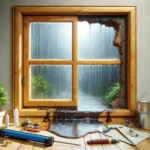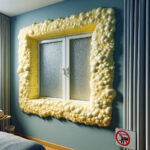À cette fin, comment les joints de brique peuvent-ils être réparés ? Bien qu’il soit possible d’effectuer la réparation soi-même, il est plus judicieux de faire appel à des spécialistes. Voici quelques étapes que vous pouvez prendre pour réparer les articulations endommagées.
Rassemblez l’équipement approprié pour la réparation des joints de brique
Pour réparer les joints de brique défectueux, des matériaux tels que :
- Le mortier ;
- Gants et lunettes imperméables ;
- Un grattoire et un masque anti-poussière ;
- Un ciseau et un marteau ;
- Une truelle bien aiguisée ;
- Une brosse dure ou une brosse ;
- L’eau.
En ce qui concerne le mortier, il doit être adapté à la réparation des joints. Pour ce faire, il est recommandé de demander conseil à des spécialistes du matériel.
Conditions préalables aux travaux de réparation
Avant d’effectuer les travaux, il est nécessaire d’effectuer des nettoyages, des lavages et surtout de bien s’habiller. En outre, vous devez savoir que le moment le plus favorable pour de telles opérations est le printemps.
Tout d’abord, mettez les gants, les lunettes et le masque. Cela vous permet d’éviter les problèmes de santé. Deuxièmement, vous devez commencer par nettoyer les joints des briques horizontales. Il s’agira de gratter les joints horizontaux avec un ciseau et un marteau, en faisant attention de ne pas endommager les briques. Après cela, nettoyez les joints verticaux.
En effet, vous devez déjà, en temps normal lors du premier nettoyage, retirer au moins trois couches de mortier de découpe. Si c’est le cas, il suffira de faire de même pour les joints verticaux, en veillant à ne pas endommager les bords des briques. Enfin, à l’aide d’une brosse ou d’un balai, retirez tous les débris friables du mur.
Comment faire le mélange de mortier ?
En général, le fabricant notifie la quantité d’eau à utiliser lors du mélange. Pour cela, vous devez verser progressivement l’eau sur le mortier en remuant lentement jusqu’à obtenir un mélange pâteux et assez collant. Lorsque la consistance du mélange est satisfaisante, le mortier s’accroche facilement à la truelle lorsqu’elle est en action. Après cela, laissez reposer le mortier pendant une période de dix minutes.
Pendant ce temps, le mortier absorbe correctement l’eau. Lorsque les dix minutes sont écoulées, mélangez à nouveau le mortier avec la truelle. Une partie du mortier peut se dessécher. Dans ce cas, il n’est pas conseillé d’ajouter de l’eau pour l’humidifier à nouveau. Dans le pire des cas, vous pouvez ajouter une nouvelle couche de mortier.
Commencer à réparer
Après avoir suivi les différentes étapes mentionnées ci-dessus, entrons maintenant dans le vif du sujet.
Pour commencer, vous devez saupoudrer d’eau sur la partie où vous souhaitez travailler. Après cela, mettez le mortier sur la truelle, puis appliquez-le sur les joints. En général, il est conseillé de commencer par des joints horizontaux. Vous devez appliquer le mortier sur les joints jusqu’à ce que le vide ou la fissure soit complètement bouché. Pour que le mortier appliqué soit efficace, mettez-le en petite couche sur les joints, en laissant sécher chaque couche avant d’en appliquer une autre.
Si vous terminez par exemple quatre rangées de joints horizontaux, vous pouvez maintenant commencer à remplir les joints verticaux. Pour embellir la réparation, lissez et compactez toutes les façades sur lesquelles vous avez travaillé avec la face de votre truelle.
Réparation des joints de briques, une question d’adhérence
Pour que l’opération à effectuer soit efficace de manière optimale, il faut tenir compte de l’état du joint à réparer. En effet, lorsque le joint à réparer est assez friable, cela altère l’adhérence du mortier neuf. Pour ce faire, il est recommandé de creuser deux fois et demie la hauteur du joint avant d’appliquer le nouveau mortier. Assurez-vous que le mortier contient de la chaux. La profondeur et la présence de chaux contribuent à l’adhérence du nouveau mortier au joint.
De plus, lorsque le joint de mortier à réparer est suffisamment dur et très ferme, l’adhérence du nouveau mortier est facile. Nous avons juste besoin de réduire la consistance du nouveau mortier. Cependant, vous devez vous assurer que le mortier nouvellement appliqué ne sèche pas rapidement. Pour ce faire, l’ancien joint et la brique doivent être humidifiés à l’aide d’un scellant de maçonnerie avant d’appliquer le nouveau mortier. Le mastic empêche le nouveau mortier de sécher rapidement.
Que faire à la fin de la réparation ?
Après s’être assuré que le mortier appliqué est ferme au toucher, un brossage en diagonale est nécessaire pour enlever les miettes de mortier sec du mur. Faites-le délicatement pour ne pas faire ressortir le mortier frais. Pendant les 72 heures qui suivent la réparation, vous devez régulièrement pulvériser le mur pour garder les briques et le mortier humidifiés.
Calfeutrage-Élite, votre meilleure alternative pour ce genre de réparation
Calfeutrage-Élite est une entreprise spécialisée dans la réparation de joints de tous calibres. Elle possède également plusieurs années d’expérience dans le calfeutrage de portes et fenêtres. Elle est présente dans toutes les villes du Grand Montréal. Alors, où que vous habitiez à Montréal, contactez-nous ! Nous serons heureux de vous faire une offre dans les plus brefs délais. Ici, Laval ou Calfeutrage Montréal possède tout l’équipement adéquat (gondole, etc.) pour réaliser ce type de travaux en hauteur.



